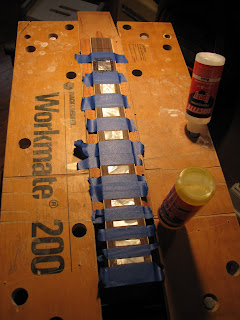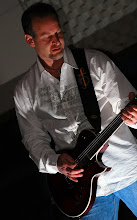I had to figure out how to hold the neck while carving so I took a clamp and screwed it to the work bench.
Here you also see some of the tools I will be using. A draw knife, spoke shave and rasp. I will also be using the wood scrapers and sand paper.
I used the draw knife to knock off the corners. I could have gotten by with out the draw knife. I could have used the spoke shave to do this as well. You have to be careful with the draw knife as it will take off as much as or more than you want. If you click on this picture you can see where if you are not careful you can gouge the wood. I decided to stop with the draw knife here.
Here I have started to shape the neck with the spoke shave.


Starting to really take shape.

I use the rasp to rough out the heel.

Then use a scraper and sand paper to smooth it out.
This is where I discovered I made a little mistake. When I rough cut the taper on the back on the neck with the router I brought it down to the nut and I should have stopped at the first fret. This has caused me to have to carve the transition from the neck to the head stock a little differently than I wanted. I am going to take this to my luthier friend Jack and see if he thinks this will effect the strength and the transition point on the neck. What I have figured out is that part of the neck is now .100 or 1/10th of an inch thinner at that point. I figure the worst case scenario is that I end up putting some graphite fiber rods into the head stock from the face side to reinforce the neck. I am going to paint he face of the head stock black so the plugs I would use for the holes would not show. Will let you know how it turns out.



















































